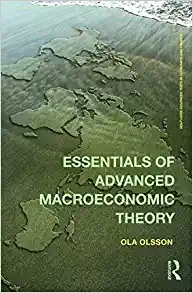


3.6.1 Checklist questions 1. Why is monetary policy chosen over scal policy as the preferred tool for stabilization policy? What does the government gain from controlling monetary policy? Why would they choose to delegate responsibility for monetary policy to an indePendent central bank? 13 The Macroeconomic Simulator available from the Carlin and Soskice website can be used to test the effects of varying key parameters on the adjustment path of the economy foliowing an economic shock. See Questions 3 and 4 in Section 3.6.2. 114 3 THE 3-EQUATION MODEL AND MACROECONOMIC POLICY 2. 'If the economy has high but stable inflation, the government has much to lose and little to gain by reducing inflation to a low rate.' Explain and assess this statement. 3. What are the advantages and disadvantages of a target inflation rate of 4% as compared with one of 0% Der annum? 4. Explain what is meant by the central bank's loss function. How are the central bank's prefer- ences reflected in the loss function? Draw the loss 'circles' for the cases where (a) )8 = 1: (b) r3 \"I. In which of the three cases will the central bank reduce inflation back to target quickest after an inflation shock? Is there any downside to adopting this policy stance? 5. Assume that a = ,6 = 1, derive the MR curve graphically using the tangencies between the loss circles and the Phillips curves. With reference to the diagrams, explain the effect of the following (in each case, assume all other parameters are held constant): (a) An increase in the slope of the Phillips curve, or (b) An increase in central bank's inflation aversion, . 6. Following an inflation shock, explain why unemployment goes up before the economy returns to medium-run equilibrium. 7. Draw the 3-equation model and give a detailed period by period description of the adjustment process for the case where the economy is hit by a permanent negative aggregate demand shock 3. With reference to the scenario in Question 7, explain the behaviour of the central bank and the economy in a situation where there is no lag in the is curve. 9. Draw the impulse response functions for output, inflation and the real interest rate afteraper- manent positive aggregate demand shock and a permanent positive supply shock. [Hint the 9. 10. Draw the impulse reSponse functions for output, inflation and the real interest rate afteraper- manent positive aggregate demand shock and a permanent positive supply shock. [Hint the 3-equation model diagrams for these two cases are shown in Figs. 3.11 and 3.14 respectively] Use the 3-equation model diagrams to Show how the economy can fall into a deation trap. Explain, with reference to the diagram, how the central bankfgovernment can intervene to escape the trap. Show the relevant is curve and re-label the MR as the PR to indicate that fiscal policy is being used. Are there any reasons why these policies might not work












